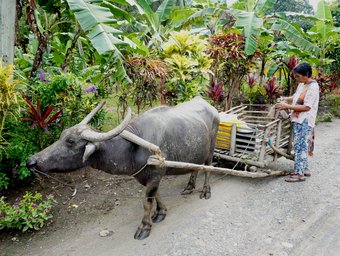Categories
Philippines
Key facts
Hazards covered by anticipation
Floods | Typhoons
No. of people reached by anticipation (activation)
Christian Aid’s 2019 volcanic ash activation reached 90,741 people (Start Network). Red Cross protocols will reach approximately 2,000 people when activated.
Anticipation partners in country
Philippine Red Cross | German Red Cross | Finnish Red Cross | Red Cross Red Crescent Climate Centre | IFRC | 510 initiative of the Netherlands Red Cross | Provincial disaster risk reduction and management offices | WFP | FAO | Start Network | Philippines Office of Civil Defense | National Disaster Risk Reduction and Management Council | Philippine Atmospheric Geophysical and Astronomical Services | Philippines Department of Interior
Inform Risk Index (2022)
Hazard and exposure: 7.8
Vulnerability: 4.4
Lack of coping capacity: 4.3
Total: 5.3 (high)
Rank: 34
Country profile
The Philippines ranks among the countries with the highest disaster risk in the world. As an archipelago consisting of over 7,000 islands, and with over 30,000km of coastline and 18 major river basins, it is highly exposed to typhoons and floods, which accounted for 80 per cent of natural disasters in the last 50 years.
Flooding, wind and storm surges associated with these events destroy houses and crops, and disrupt livelihoods. Landslides, drought, earthquakes, tsunamis and volcanic eruptions also periodically threaten the population. Furthermore, the sporadic but ongoing conflict between Moro Muslim groups and the government compounds vulnerability in the Mindanao region by contributing to displacement and infrastructure damage. Across the country, 74 per cent of the population is exposed to multiple hazards.
Disaster policy is guided by the National Disaster Risk Reduction and Management Law of 2010, which states that all provinces, cities and municipalities must establish a disaster risk reduction and management office, with an officer in charge, and must “formulate and implement a comprehensive and integrated [local disaster risk reduction and management] plan". This plan must detail the use of the local disaster risk reduction and management fund, which is one source of funding for anticipatory action.
The Philippine Red Cross and partners have been working since 2017 to develop Early Action Protocols (EAPs) for floods and cyclones. They have made significant headway in integrating early action with local and provincial disaster management structures, either by complementing the efforts of the Philippine Red Cross during an activation, or through the allocation of funds for early actions.
Projects
Forecast-based financing in the Philippines: closing the gap between disaster risk reduction and emergency relief
Since 2017, the Philippine Red Cross and the German Red Cross have been working to establish Early Action Protocols (EAPs) for floods and cyclones. An EAP for drought is also under development.
More information to follow.
Since 2015, WFP has been part of a technical working group on forecast-based financing, along with practitioners including the Philippine Red Cross, FAO and the Start Network. As part of this technical working group, these organizations generate evidence regarding forecast-based financing interventions to enable the government to select and implement the most appropriate early actions.
In April 2019, the Start Network funded Christian Aid to respond to volcanic activity (alert 317).
Latest resources
- EAP Update: Philippines - Typhoon Paeng
- Philippines Early Action Protocol for Floods: pocket version
- The Philippines - Impact of Early Warning Early Action. Exploring the interplay between El Niño-induced drought, conflict and gender - FAO (2020)
- Exploring Early Warning Early Action in conflict and mass migration settings. The case of Colombia and the Philippines - FAO (2020)
- REAP Country case studies: Philippines


